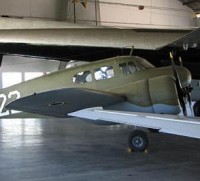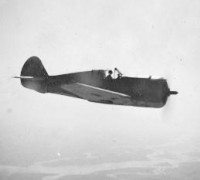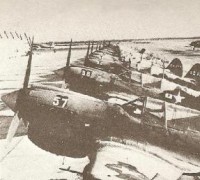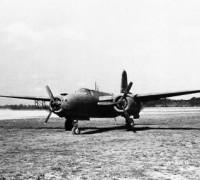BRAZILIAN AIR FORCE FAB * - BRAZILIAN AIR FORCE
6)CONSOLIDATED PBY 5-A CATALINA
Total received: 22
Crew: 8 — pilot, co-pilot, bow turret gunner, flight mechanic, radioman, navigator and two waist gunners.
Length: 63 ft 10 7/16 in (19.46 m)
Wingspan: 104 ft 0 in (31.70 m)
Height: 21 ft 1 in (6.15 m)
Wing area: 1,400 ft² (130 m²)
Empty weight: 20,910 lb (9,485 kg) Max takeoff weight: 35,420 lb (16,066 kg)
Powerplant: 2× Pratt & Whitney R-1830-92 Twin Wasp radial engines, 1,200 hp (895 kW each)
Zero-lift drag coefficient: 0.0309. Drag area: 43.26 ft² (4.02 m²). Aspect ratio: 7.73
Performance: Maximum speed: 196 mph (314 km/h). Cruise speed: 125 mph (201 km/h)
Range: 2,520 mi (4,030 km)
Service ceiling: 15,800 ft (4,000 m)
Rate of climb: 1,000 ft/min (5.1 m/s)
Wing loading: 25.3 lb/ft² (123.6 kg/m²). Power/mass: 0.034 hp/lb (0.056 kW/kg)
Lift-to-drag ratio: 11.9
Armament
3× .30 cal (7.62 mm) machine guns (two in nose turret, one in ventral hatch at tail)
2× .50 cal (12.7 mm) machine guns (one in each waist blister)
4,000 lb (1,814 kg) of bombs or depth charges, torpedo racks were also available
The Consolidated Vultee 28 was an amphibian aircraft manned by a crew of five, and primarily developed for long range maritime patrols. It flew for the first time as (XPBY-1) in 1935, and was operated by a large number of countries in multi role missions long after the end of World War Two. Brazilian Air Force operated these sturdy, cumbersome but highly dependable aircrafts from 1943 to 1982, in Naval patrol missions and as a support for the C 47 at the Military Air Mail.
22 PBY 5A were received during the war. One of them was credited for the sinking of U -199 50 miles east of Rio De Janeiro. The Brazilian Air Force flew Catalinas in naval air patrol missions against German submarines began in 1943. The aircraft also performed air mail service. In 1948 a transport squadron was formed and equipped with PBY-5As converted to the role of amphibian transport. The 1st Air Transport Squadron (ETA-1) was based in the port city of Belem and flew Catalinas and C-47s in well-maintained condition until 1982.
During the year 1942, amid economic incentives and diplomatic pressure, the Americans set up naval air bases along the North-Northeast coast of Brazil, thus starting the American Navy (US Navy) to operate patrol and anti-submarine warfare squadrons from bases . From that moment, the crews of the Brazilian Air Force officers began to accompany the American missions, gradually gaining the necessary instruction and qualification, complemented with a vast training program. At the end of 1942, it was determined that the Brazilian Air Force should begin to assume a portion of the patrolling and anti-submarine warfare activities in its territorial sea, for this, within the terms of the Leand & Lease Bill Act (Lease and Loan Act), were transferred seven PBY-5 Catalina aircraft that were in operation in the US Navy (US Navy) VP-94 Patrol Squadron.
At this time, the patrol groups from both nations began to be concentrated at the Galeão Air Base, in the city of Rio de Janeiro, where in the beginning of 1943 the USBATU (United States Brazilian Training Unit) was created, a unit dedicated to the training of Brazilian crews in anti-submarine, anti-surface and patrol doctrines and techniques. Upon completion of this training program, three PBY-5 Catalina aircraft were deployed to the 7th Aviation Regiment at Belém Air Base, three remained in Rio de Janeiro at the Galeão Unit and the seventh was sent to the 14th Air Base Corps. from Florianópolis in Santa Catarina, where they started patrolling missions, initially with mixed crews of officers from both countries for adaptation and later only by Brazilians.
The first attack carried out by a Brazilian crew on a German submarine was on May 22, 1942. A B-25 Mitchell, from the Agrupamento de Aviões de Adaptação, based in Fortaleza, was on patrol in the vicinity of the archipelago of Fernando de Noronha and Atol das Rocas, where four days earlier the Brazilian merchant ship “Comandante Lyra” had been sunk by the Italian submarine “Barbarigo”. At 2 pm, the crew of the B-25 – under the command of Capt.-Av. Parreiras Horta (FAB) and composed by Cap.-Av. Pamplona (FAB), 1st Lt. Schwane (USAAF), Sgt. Yates (USAAF), S/Sgt. Tyler (USAAF) and S/Sgt. Robinson (USAAF) – surprised a German submarine sailing on the surface, which immediately reacted with strong anti-aircraft artillery fire to the presence of the B-25. neutrality, crews could only engage enemy units if they were initially attacked. Therefore, the Mitchell crew launched their depth charges, which landed close to the submarine.
The first record of a clash with the enemy, using a PBY-5 Catalina, occurred on July 31, 1943, when the PBY-5 PA-02 commanded by officer Alberto Martins Torres was on a patrol mission in the region. from Cabo Frio accompanying the departure of the JT-3 convoy bound for the United States, he started to accompany the German submarine U-199 that had been detected and attacked by a PBM-3 Mariner aircraft of the VP-74 squadron (USN), based on the Rio de Janeiro of the American Navy (US Navy), the German vessel was damaged in the initial attack, but did not sink, and remained firing its anti-aircraft artillery pieces at the PBM-3C. The Brazilian defenses had already been alerted and a Hudson from the Brazilian Air Force immediately took off from Rio de Janeiro, piloted by the Asp.-Av. Sergio Candido Schnoor. He attacked U-199 with two Mk. 17 which fell near the submarine; making a second attack, the Asp.-Av. Schnoor machine-gunned the U-199 with the machine guns located in the Hudson's nose, which disabled some of the German sailors who manned the submarine's anti-aircraft artillery.
The Brazilian aircraft then left the area and the PBY-5 Catalina PA-02 also from the Brazilian Air Force, which was on patrol near the site, was deployed to attack the U-199, so I came across the enemy vessel, the aircraft dropped three depth charges on the target, a fourth charge would still be dropped just to confirm the sinking, as the German crew had already abandoned the boat. This would be the first sinking of a German submarine by a Brazilian aircraft and crew. After the attack on the Brazilian aircraft, the survivors flew over inflatable boats and lives, which were later rescued by an American ship. The PBY-5 Catalina PA-02 was named Arará in honor of one of the Brazilian ships sunk by German submarines off the Brazilian coast during the year 1942.
By Armas Nacionais - Modelismo & História: Consolidated PBY-5 Catalina
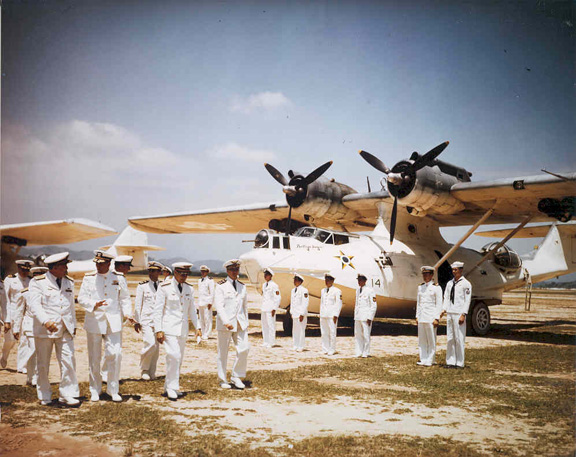
US Navy and Brazilian officers in front of a group of PBY-5 for the occasion of the delivery of Catalina aircraft to the Brazilian Air Force. Photo taken at Galeao NAF circa December 1944
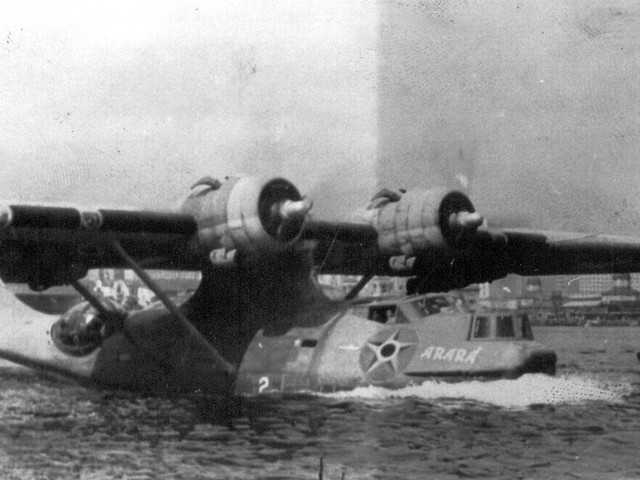
Arara. The same was the first Brazilian aircraft to send to the bottom U 199 off Rio de Janeiro.

The Catalinas were the most suitable aircraft for supplying military detachments scattered among the Amazon waterways. They reached places where only long range transport would dare to go. ETA-1 insignia was a winged turtle with the motto "Though slowly, I always get there". Today, the last Brazilian Catalina (ex-RCAF) is displayed at the Airspace Museum (MUSAL), in Rio de Janeiro.
